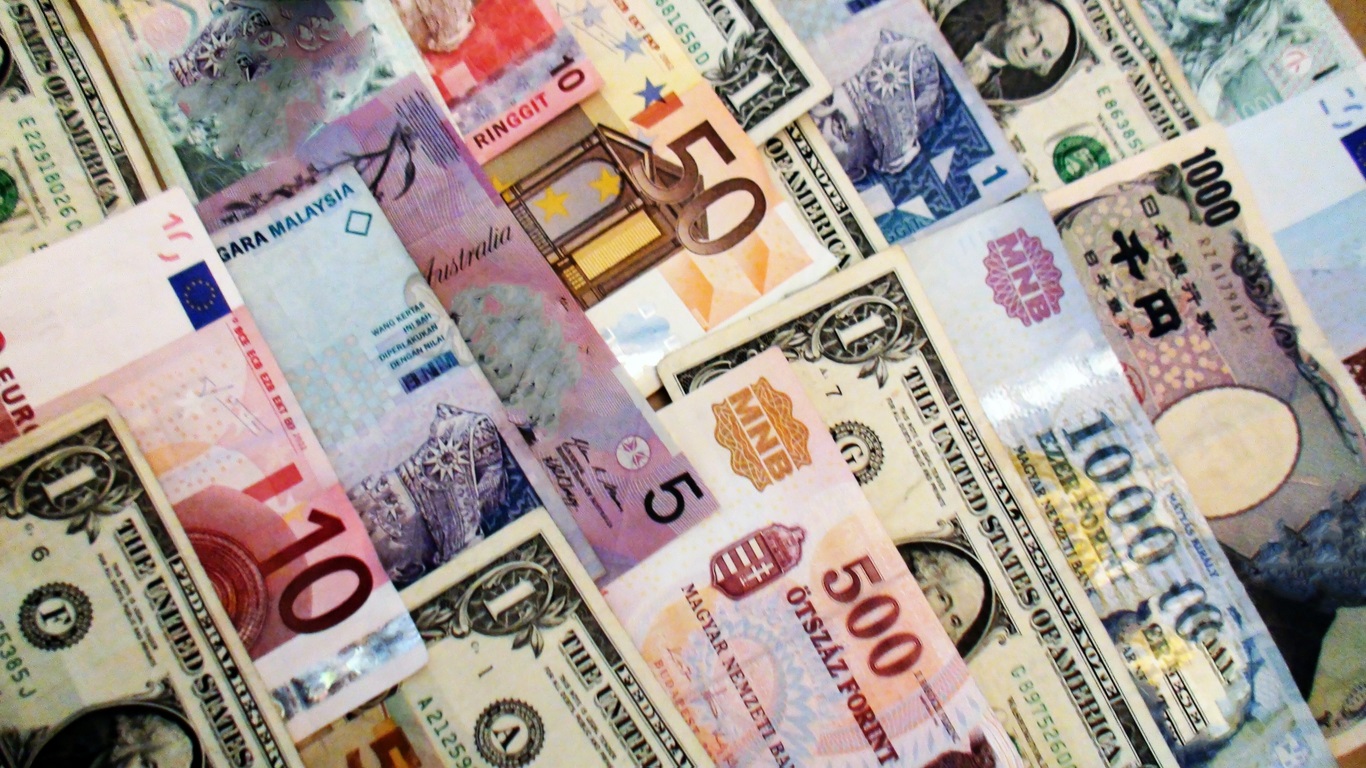If you earn in dollars or euros and spend in rupees, your payment platform quietly decides how much of each invoice you actually keep. Two platforms can show the same 1,000 dollar payment on screen, but your final INR can differ by several thousand rupees once fees and exchange rates are applied.
Here is a grounded look at how PayPal, Wise, Payoneer, local fintechs like BRISKPE and traditional bank wires behave on fees, FX rates, speed and country coverage, with concrete examples for freelancers and agencies working with overseas clients.
What really changes your take home amount
Four things decide how much money lands in your bank:
- The percentage fee on incoming payments
- Any fixed fee per transaction
- The hidden spread between the provider’s FX rate and the mid market rate
- How many days the money is stuck in transit
Everything else is branding and user interface.
To keep things concrete, imagine a freelancer in India who invoices a client 1,000 dollars every month. Assume an interbank rate of 83 INR per dollar. At that rate, the theoretical maximum they could receive is 83,000 rupees before any fees.
Now see how each channel works in practice.
PayPal: Familiar, but often the most expensive
PayPal’s biggest strength is how common it is. A US or European client almost always knows how to pay a PayPal invoice and the service is available in over 200 markets.
For an Indian freelancer receiving an international payment, PayPal’s fee table shows a 4.4 percent platform fee plus a fixed fee based on currency (for USD, around 0.30 dollars). Independent breakdowns also show a currency conversion markup in the 2.5 to 4 percent range above the real market rate.
On that 1,000 dollar invoice, the picture looks like this:
- 4.4 percent platform fee takes 44 dollars
- Fixed fee adds roughly 0.30 dollars
- FX markup of around 3 percent means your dollars convert at something like 80.5 INR instead of 83
By the time the money hits your Indian bank account, it is common to lose 70 to 80 dollars in total friction, or roughly 7 to 8 percent of the invoice value.
Speed is usually good, with the PayPal balance updating instantly and withdrawals taking one to two days, but for regular high value invoices the all in cost is hard to ignore.
Wise: Transparent fees and mid-market FX
Wise is built around a different promise. Its public pricing highlights that it uses the live mid market rate and charges a separate fee instead of hiding the margin inside the FX rate. Wise+1
For transfers into India, independent comparisons show Wise charging a variable fee of around 1.6 to 1.8 percent of the amount, plus a small fixed fee, while still using the real interbank rate for conversion. The company itself reports an average cross border cost of 0.59 percent across routes, which is significantly below the global average remittance cost.
On the same 1,000 dollar invoice example, with 83 INR as the mid market rate:
- Wise might show a fee of roughly 17 to 20 dollars
- The remaining 980 plus dollars convert close to 83 INR
You end up somewhere around 81,500 to 82,000 rupees. On speed, Wise says most transfers arrive within a few hours and the majority within 24 hours, depending on route and funding method.
Payoneer: Built around marketplaces and multi currency balances
Payoneer is widely used by freelancers and agencies who work through platforms like Upwork, Fiverr, or global e commerce marketplaces. It lets you receive in multiple currencies and withdraw to local bank accounts in more than 150 countries.
The cost structure has two main pieces for an Indian user:
- Receiving payments by card or via certain channels can incur a fee of up to 3.2 percent, depending on method. Payoneer+2Skydo+2
- When you withdraw in a different currency there is a currency conversion markup, often in the 2 to 3 percent range above mid market. Skydo+2Xflowpay+2
For example, one analysis of an 8,000 dollar payment shows a 3.2 percent receiving fee and a 3 percent FX markup when withdrawing to INR, which together cut about 6 percent from the original amount.On a 1,000 dollar invoice that would be roughly 60 dollars in total cost if the payment comes via card.
Payoneer becomes more interesting when the payment source is a marketplace that has negotiated different fee terms, or when you want to hold balances in USD or EUR for some time before converting. For many freelancers, it is a convenient middle ground between pure fintech accounts and full bank wires, but the overall cost is often higher than mid market based options once FX is included.
BRISKPE: India focused, flat fee and live FX
BRISKPE is an export payment solution that lets Indian businesses collect money from overseas clients in dollars, pounds, euros, and other major currencies. The money is settled to your Indian bank account in INR, usually within one or two working days. Since it is built specifically for Indian exporters, it also generates e FIRA documents automatically, which helps with compliance.
BRISKPE offers a slab based flat fee model for A2A (account to account) payments, which makes it easier to estimate the final amount you will receive. The slabs work like this:
- If you receive up to 2,000 dollars, the fee is a flat 16 dollars.
- If you receive between 2,001 and 10,000 dollars, the fee is a flat 25 dollars.
- If you receive more than 10,000 dollars, the fee is 0.25 percent of the incoming amount.
There is no extra FX markup added on top, so the conversion uses the live mid market rate that you see on currency charts.
To understand what this means, imagine you receive a 1,000 dollar payment. The fee falls in the first slab, so BRISKPE charges 16 dollars. The remaining 984 dollars convert at the live FX rate. If the market rate is around 83 INR per dollar, you would receive close to 82,000 rupees in your bank account. The actual loss is roughly 1 percent of the invoice, mostly because of the flat fee.
Now take a bigger invoice. A 5,000 dollar payment has a flat 25 dollar fee. After deducting the fee, the rest converts at the mid market rate. Users often receive around 412,000 rupees at an 83 INR rate. The effective deduction again stays in the same low range, which is much more predictable than traditional bank wires that lose money through fixed charges plus FX spreads.
On very large payments, BRISKPE switches to a percentage model. For example, a 15,000 dollar payment would have a 0.25 percent fee, which is 37.50 dollars. The rest converts at the real FX rate, so the final amount stays competitive.
Traditional wire transfers
SWIFT wire transfers remain the universal fallback. Almost any client can walk into their bank or log into online banking and initiate an international transfer. That ubiquity is their main advantage.
From a cost perspective, they lag behind modern fintech and local aggregators. The World Bank’s remittance price monitoring shows that the global average cost of sending 200 dollars is still above 6 percent, with bank based methods significantly higher than digital channels.
Bank wires often mix a flat fee charged by the sending bank with one or more intermediary bank charges and a currency conversion spread in the 3 to 4 percent range or more.
On a 1,000 dollar transfer, that can mean paying a fixed fee of 20 to 50 dollars at the sending side plus losing another 30 to 40 dollars in FX margin when the money arrives in INR. The total impact frequently sits in the 5 to 8 percent band, quite similar to high fee digital options.
Speed is also variable. Some wires clear within one business day, many take two or three, and additional compliance checks can extend timelines.
Comparative Summary
| Feature | PayPal | Wise | Payoneer | BRISKPE | Traditional Wire |
| Approx. Cost Structure | High (Fee + FX Markup) | Low (Variable Fee) | Moderate (Markup on Withdrawal) | Flat Fee (Slab-based) | High (Fixed + Intermediary) |
| Exchange Rate Basis | Bank Rate + Markup | Mid-Market Rate | Mid-Market + Markup | Live Interbank Rate | Bank Rate + Markup |
| FIRA Availability | Monthly (Free) | Per Transfer (Paid) | Automated (Free) | Instant (Free) | Manual Request (Paid) |
| Typical Speed | 3–5 Days | 1–2 Days | 2–4 Days | 1 Day (T+1) | 2–5 Days |
Conclusion
Choosing the right international payment platform is less about finding a single perfect option and more about understanding what each route costs you in real terms. Wise, Payoneer, PayPal and bank wires all work well in different situations, especially if you manage clients across multiple countries or rely on global marketplaces. What matters most is calculating how much you actually receive per payment and picking the right tools that keep more money in your pocket.
For Indian freelancers and agencies, BRISKPE stands out for its simplicity. The fees are clear, the FX rate is the real market rate, and the export documents are generated automatically. It is not a global wallet, but for anyone earning overseas and settling into an Indian bank account, it offers a straightforward and predictable way to get paid without hidden deductions.
Explore BRISKPE.com today!





